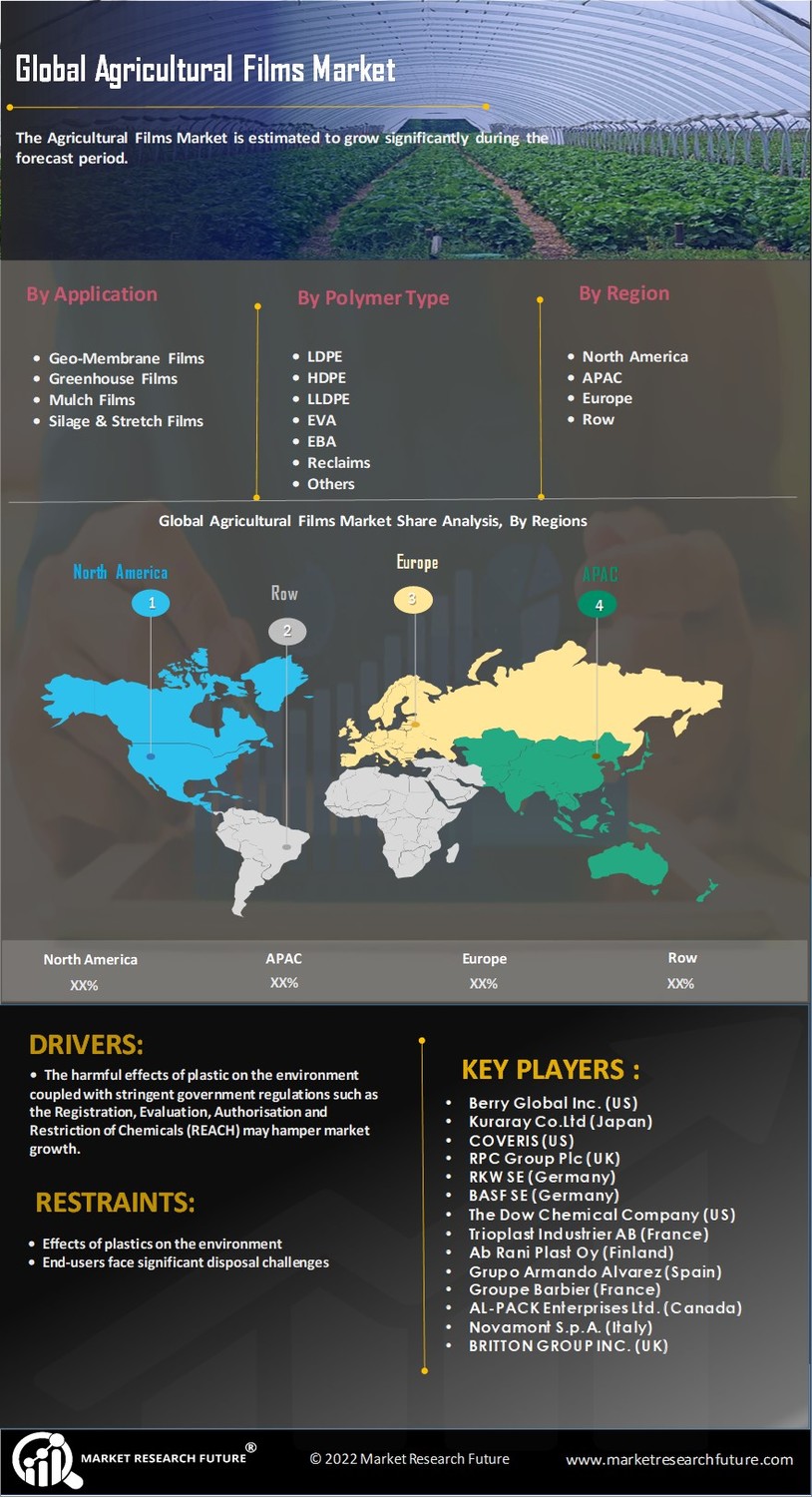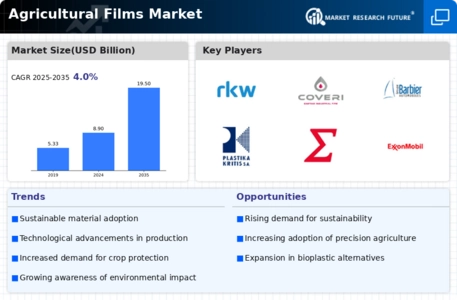Rising Demand for Food Security
The Agricultural Films Market is experiencing a notable surge in demand driven by the increasing global population and the corresponding need for enhanced food security. As populations grow, the pressure on agricultural systems intensifies, necessitating innovative solutions to maximize crop production. Agricultural films, such as mulch films and greenhouse covers, play a crucial role in improving crop yields and protecting plants from adverse weather conditions. According to recent data, the agricultural films market is projected to reach a valuation of approximately USD 12 billion by 2027, reflecting a compound annual growth rate of around 6% from 2023. This trend indicates a strong correlation between food security initiatives and the adoption of agricultural films, as farmers seek to optimize their output in the face of rising demand.
Expansion of Greenhouse Cultivation
The Agricultural Films Market is significantly benefiting from the expansion of greenhouse cultivation practices across various regions. Greenhouses provide controlled environments that enhance crop growth and yield, making them increasingly popular among farmers seeking to maximize productivity. Agricultural films, particularly those used for greenhouse covers, are essential in creating optimal conditions for plant growth by regulating temperature, humidity, and light exposure. The market for greenhouse films is projected to grow at a robust rate, with estimates indicating a potential increase of 8% in demand by 2026. This growth is indicative of a broader trend towards intensive farming practices, where agricultural films play a critical role in supporting sustainable and efficient food production systems.
Increasing Awareness of Crop Protection
The Agricultural Films Market is witnessing a heightened awareness regarding the importance of crop protection among farmers and agricultural stakeholders. The use of agricultural films, such as anti-fog and UV-stabilized films, is becoming more prevalent as they offer significant benefits in safeguarding crops from pests, diseases, and environmental stressors. This awareness is driving the adoption of agricultural films as essential tools for enhancing crop resilience and ensuring food quality. Market data suggests that the segment for crop protection films is expected to grow by approximately 5% annually, reflecting the increasing recognition of the role these films play in modern agriculture. As farmers become more educated about the advantages of using specialized agricultural films, the market is likely to expand further, aligning with the overall trends in agricultural innovation.
Environmental Regulations and Sustainability
The Agricultural Films Market is increasingly influenced by stringent environmental regulations aimed at promoting sustainability in agricultural practices. Governments and regulatory bodies are implementing policies that encourage the use of biodegradable and recyclable agricultural films, which are less harmful to the environment. This shift towards sustainable materials is not only a response to consumer demand for eco-friendly products but also a proactive measure to mitigate the environmental impact of traditional plastic films. The market for biodegradable agricultural films is expected to grow significantly, with estimates suggesting a potential increase of over 20% in market share by 2026. This trend highlights the importance of sustainability in shaping the future of the agricultural films market, as stakeholders prioritize environmentally responsible solutions.
Technological Innovations in Film Production
Technological advancements are playing a pivotal role in the Agricultural Films Market, particularly in the production of high-performance films. Innovations such as nanotechnology and advanced polymer formulations are enhancing the properties of agricultural films, making them more effective in terms of UV protection, water retention, and pest resistance. These improvements not only increase the efficiency of agricultural practices but also contribute to higher crop yields. The integration of smart technologies, such as sensors embedded in films, is also emerging, allowing for real-time monitoring of soil conditions and crop health. As a result, the market is witnessing a shift towards more sophisticated agricultural films that cater to the evolving needs of farmers, potentially leading to a market growth rate of 7% annually over the next few years.

















Leave a Comment